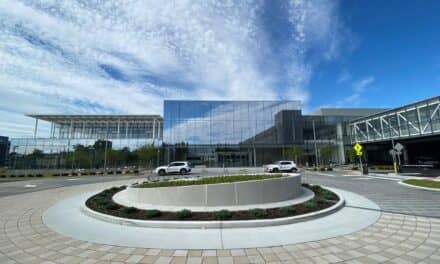While automation and AI promise to transform laboratory operations, experts say the key to true efficiency lies in rethinking lab workflows as unified systems, where people, processes, and technologies align to drive smarter, more resilient performance.
By Andy Lundin
Summary:
To improve lab efficiency and resilience, leaders must first optimize workflows and engage staff before implementing technologies like automation and AI.
Takeaways:
- Systemic Optimization First: Technology should follow—not precede—standardized, well-evaluated workflows for maximum impact.
- Empower Staff Through Inclusion: Engaging frontline employees in process design fosters ownership, reduces resistance to change, and ensures practical solutions.
- Automation and AI as Enablers: These tools can amplify human potential and efficiency, but only when paired with robust processes, clear asset visibility, and effective change management.
Despite the widespread availability of advanced technologies designed to support laboratory professionals, workflow and efficiency challenges remain a pervasive issue for labs across the industry.
While integrating new tools and technologies—from automation to AI—is essential, labs that aren’t structurally optimized to meet the needs of their overall processes may never see those tools reach their full potential. Some experts argue that success depends on rethinking the lab as a holistic, connected system, more than just the sum of its parts.
Designing Labs for Flow
Before digitizing or upgrading parts of a laboratory’s infrastructure, lab leaders should consider how the entire system functions and should especially factor in the end-to-end impact on workflow through the lab.
Judy Bosko, senior executive officer of Customer Care and Technical Services at Sysmex, advises labs to take a bird’s-eye view of their daily operations.
“Do certain tasks need to be prioritized because physicians are expecting specific results? What are the demands at 10 a.m., for example? Labs need to look at how everything flows throughout the day and then adjust systems, processes, and assets to make it as efficient as possible,” she says.
Alex Louis, senior vice president of Enterprise Operations and Operational Excellence at Quest Diagnostics, voiced similar sentiments. He noted a specific example regarding specimen management concerning how disconnected processes can impact the entire lab’s workflow.
“Specimens might move faster through specimen management, but then they sit idle before reaching the analytical equipment—because the equipment was never prepared for that kind of throughput,” he says.
He emphasizes that introducing technologies that can support certain processes should come after the process becomes standardized and is fully evaluated within the broader workflow.
“The first step is to define a standard, then optimize it,” Louis says. “You could run a Kaizen or Lean event to design a future state that excites your employees and then automate that process.”
Reclaiming Time and Reducing Waste
Kaizen, which is a Japanese business philosophy of continuous improvement that emphasizes small, incremental changes involving all employees1, along with other Lean manufacturing principles, may help labs identify and eliminate non-value-added tasks, Louis says.
He encourages labs to adopt these strategies to reduce inefficiencies and reclaim valuable time, which is especially critical amid ongoing workforce shortages. One key target, for example, is removing routine data entry from lab personnel duties.
“Let lab professionals focus on tasks they’re uniquely qualified for—not repetitive work that can be automated,” Louis stressed.
Beyond eliminating manual data entry, he noted consolidating redundant documentation and shifting routine responsibilities to machines, as other concepts to consider.
“It’s hard to find and retain people in our industry, and manual labor remains a challenge,” he says. “There’s still a lot of unnecessary data entry happening in patient service centers and labs. We want to eliminate that entirely—it’s non-value-added and a burden for employees.”
With staffing challenges putting added strain on labs, Bosko notes that inefficient layouts and task redundancies only contribute to worsened productivity.
“In some labs, people have to walk all the way around just to grab something, then come back to where they started; that’s wasted time and more chances to get pulled away from their work,” she says.
That’s where Sysmex aims to step in and support lab partners.
“We ask them, ‘What are they doing in the lab, and how can we help eliminate or take on that responsibility with our solutions?’” says Bosko. “If they’re dealing with a down analyzer, for example, we look at how we can manage that burden ourselves and further support Lean processes.”
Automation: Amplifying Human Potential, Not Replacing It
Automation is critical to modern lab design—not because it eliminates jobs, but because it empowers staff to focus on higher-value work by offloading repetitive, manual tasks. But experts caution that automation should follow, not precede, process optimization.
“You don’t want to automate or digitize a process that is not standardized or optimal,” says Louis. “Define a standard, then optimize it. Only then should you automate.”
Louis encourages labs to involve staff in this process from the beginning to ensure the technology supports real needs.
“We ran a pilot in one of our labs where we replaced the entire data entry station with an AI-powered solution,” he says. “But even before designing it, we asked frontline staff: ‘What bothers you? What works? What doesn’t?’ We involved them in designing the future-state workflow, so they truly owned the solution.”
That kind of inclusive process can help reduce resistance to change and build ownership in the outcomes.
Claudio De Nardi, senior product manager of LC-MS Solutions at Thermo Fisher Scientific, adds that automation can dramatically improve precision and throughput—particularly in sample preparation.
“It’s not just a matter of speed,” De Nardi says. “It’s also a matter of the accuracy of the work being performed.”
Yet, scaling this benefit often requires specialized expertise that labs don’t always have. “There is a general lack of expertise for personnel who have the ability to develop robust and reliable scripts to automate the sample preparation step,” he says.
Automation will amplify lab performance—but only when built on a foundation of standardized processes, engaged staff, and transparent systems.
Enhancing Visibility with Smarter Asset Management
Another critical but often overlooked contributor to lab inefficiency is poor visibility into lab assets. Steve Corbesero, Jr., senior director of Products & Solutions at MachineQ, points to data from a recent survey showing that 44% of lab professionals cited limited visibility into asset location and quantity as a top workflow challenge.
“This lack of visibility can have trickle-down effects and lead to workflow challenges related to missed calibration or preventative maintenance events, inventory management and use, and more,” he says. “It can even result in unplanned downtime—something 60% of respondents in our survey said they experience.”
He recommends labs begin with scalable, integrated solutions like indoor asset tracking that connect with enterprise asset management (EAM) and computerized maintenance management systems (CMMS).
“This integration enhances operational efficiency by reducing downtime and ensuring quick access to vital instruments,” Corbesero explains. “It also supports proactive resource planning, prevents overstocking or underutilization, and eliminates manual inventory checks—simplifying compliance and audit processes.”
Preparing the Lab for AI
Artificial intelligence has become a buzzword across every industry, and the clinical lab is no exception. But unlike certain tech fads, AI is proving its ability to enhance lab efficiency in real, practical ways.
“AI is poised to significantly enhance workflow efficiency by taking on routine decision-making tasks related to scheduling, forecasting, and inventory management,” says Corbesero. “It will simplify complexity, allowing labs to operate more smoothly without being bogged down by manual interventions.”
Yet while AI brings exciting possibilities, it’s not plug-and-play. Labs still need human oversight—especially to manage nuance and exceptions.
“AI doesn’t always capture the case-by-case nuance that many complex claims require,” says Clarisa Blattner, senior director of Revenue and Payor Optimization at XiFin. “Because it draws on historical data, it may not perform as well with unique or edge cases—especially in nuanced clinical scenarios. It’s not a one-size-fits-all solution, which is why thoughtful application and human oversight are essential.”
Still, she adds, AI holds promise and noted benefits to lab revenue cycle management (RCM) in particular and task prioritization. The key lies in thoughtful application and understanding its limitations.
“From a workflow perspective, AI helps us prioritize tasks, predict potential denials, and direct team efforts where they’ll have the most impact,” says Blattner. “We’re leveraging historical data not to replace people—but to make them more efficient and focused.”
Even as some payors misuse AI to justify denials, labs can harness the same technology to accelerate resolution and boost team productivity. “We’re using it to better match tasks to people and resolve cases faster,” Blatner says.
Change Management: Making Innovation Stick
As labs adopt new technologies and modernize workflows, success depends on more than just the tools—it depends on people. Change management, therefore, is critical.
“Change management plays a pivotal role in embracing new workflows and processes at any organization,” says Corbesero. “Working alongside end users and stakeholders to develop communication plans and training materials—and to solicit feedback—can be the difference between failure and success.”
To ensure a smooth transition, lab leaders must create a culture of inclusion and transparency. That means involving staff early in the process and giving them ownership over the solutions being implemented.
“To define the standard, we’re trying to make it very inclusive so that everybody can be part of the future solution,” says Louis. “It makes adapting to change management much easier afterwards.”
As labs continue to face mounting pressure to do more with less, leaders who can harmonize people, processes, and technology will be best positioned to deliver not only efficiency, but resilience.
LA-based writer Andy Lundin is a contributor to CLP.
Featured Image: Pop Nukoonrat | Dreamstime.com
Reference
1. “Kaizen (continuous improvement.” Daniel, Diann. TechTarget. May 13, 2021. https://www.techtarget.com/searcherp/definition/kaizen-or-continuous-improvement





